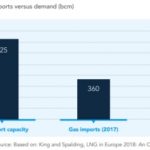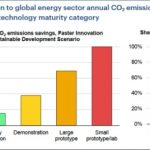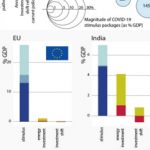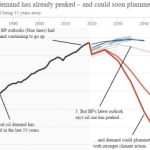The Russian gas crisis has not resulted in the return of coal and high emissions in Europe, says Lauri Myllyvirta at CREA. He presents the figures that show quite the opposite. Coal returned, as expected, with the post-Covid rebound, but peaked in September 2022 below its pre-Covid level, and has been falling since along with emissions. Meanwhile, high gas prices caused by Russia’s cut-off has kept gas demand low and, more importantly, driven the … [Read more...]
Cutting energy usage with Behaviour Change: Covid and Russia’s war show it can happen fast
Technology alone won’t meet our net zero targets. For the foreseeable future there will always be carbon-intensive assets and hard-to-abate sectors. Only “behaviour change” by citizens worldwide can bridge the gap that technology cannot. And the reduced energy use that it delivers will also lower the targets that the rapid growth of clean energy supply are now chasing. Here the IEA lays out the challenges in its Behavioural Changes tracking … [Read more...]
Using ENTSO-E’s modelling for China’s grid expansion
The EU and China have similar challenges when expanding their complex grid network. Both have large populations and multiple borders (China has 23 provinces, five autonomous regions, four municipalities and two administrative regions). Both must rapidly add clean power whilst ensuring energy security at the lowest cost. Helen Farrell at ECECP describes their project to use European ENTSO-E modelling tools to assess scenarios for China. One key … [Read more...]
China’s energy crisis: the problems with coal exit, emissions targets, and a command economy
China is also suffering from an energy crisis. Major industries have had to restrict production, and reports abound of candle-lit dinners, traffic lights failing and people getting trapped in elevators. Its effect has also been global, with Apple, Tesla, Microsoft and Dell saying it’s hitting their supply chains. As Jun Du at Aston University explains, China’s drive to cut coal has collided with post-Covid resurgent demand and an unusually hot … [Read more...]
Electric Micromobility: how to cut emissions, create jobs and transform urban transport
What if e-bikes, electric scooters and electric skateboards were added to walking and cycling in our attempts to reduce emissions through behaviour change? It’s a promising solution for all those people who genuinely want to reduce their emissions but don’t want the extra exercise. Quoting from their report, Jennifer Dungs at EIT InnoEnergy looks at the gains to be made, along with a valuable reduction in city congestion. Micromobility is still … [Read more...]
Covid-19: want to vaccinate 75% of the world? Developing nations need small-scale Solar refrigeration first
The flexibility of small scale solar can help roll out vaccines to remote and poorer parts of the world that the grid doesn’t reach. Access to power for refrigeration is vital when you consider that most vaccines must be stored between 2°C and 8°C, like for measles and polio. It’s the same for the Covid-19 vaccines from Johnson & Johnson and AstraZeneca-Oxford. But the Moderna vaccine must be stored at between -25°C and -15°C. The … [Read more...]
WEO 2020 means updated price predictions to 2040: Oil, Gas, Coal, Renewables, Power
The combined effect of the global lockdown, more ambitious climate policies and the rise of renewables will have a significant effect on European power prices up to 2040, as well as the sales revenues of renewable energies. Carlos Perez-Linkenheil at Energy Brainpool uses their Power2Sim model to look at the data in the IEA’s latest World Energy Outlook 2020 and make quantitative forecasts. The pandemic has caused structural distortions to the … [Read more...]
The IEA’s World Energy Outlook 2020 at a glance
This month the IEA published its annual flagship World Energy Outlook (WEO). Simon Göss at Energy Brainpool picks out his highlights. This year’s WEO has four scenarios, two of them new: an updated “Stated Policies Scenario” (STEPS: what governments have promised), the new “Delayed Recovery Scenario” (DRS: due to Covid), an updated “Sustainable Development Scenario” (SDS: what’s needed to meet the Paris targets), and the new “Net Zero Emissions … [Read more...]
Europe has enough Gas infrastructure. Why build more?
In early November a first vote is expected in the European Parliament on the Recovery & Resilience Facility’s €672.5bn budget. Esther Bollendorff at CAN Europe runs through the arguments against providing any funding for new gas infrastructure. She presents evidence to show that the EU is already oversupplied with gas import capacity, and all new fossil gas transmission projects have been rejected by the market since 2017. Solar and wind … [Read more...]
Are 1.5°C scenarios supplanting “Business As Usual” as the new benchmark?
The world energy outlooks published annually by the IEA, BP and DNV GL look very different this year. 1.5°C scenarios are being taken much more seriously. Could it be because of the trauma of Covid-19, or the extraordinary – though still insufficient – success of renewables coupled with the rising ambition of climate-aware governments and their policies? Either way, they are helping to shift the debate away from the mainstream “business as usual” … [Read more...]
The energy transition needs some of the $12tn global Covid stimulus. But much less than you think
Governments worldwide have committed over $12tn to recover from the Covid-19 pandemic, spent over the next 5 years. Current estimates say the energy transition needs $1.4tn/year globally between 2020 and 2024 to get us on the path to meet the 1.5oC Paris goal. Clearly, there is an opportunity here. Although support for healthcare systems and the overall economy are the stated priority of governments, much of that $12tn is still not committed. … [Read more...]
Renewables shares outperformed fossil fuels over 10 years. Have investors noticed?
Shares in listed renewables firms are outperforming their fossil fuel equivalents, both in terms of returns and volatility. But although investment is rising, they’re still not getting enough to meet our 2050 targets, says the IEA. Why? In this article summarising the first of a series of reports they look at the 5 and 10 year record of the two verticals. In all the three territories analysed – the U.S., the U.K., and Germany/France - renewables … [Read more...]
BP Outlook 2020: “peak oil” has already happened
BP’s latest Outlook predicts – for the first time - that oil saw its peak in 2019. In each of BP’s Outlooks, published annually since 2011, they have revised their predictions for the global energy landscape to 2050 as new data comes in. The growth of clean energy and the changing shape of climate policies have seen each successive forecast increase the share of renewables at the expense of fossil fuels. This year even gas has seen its prospects … [Read more...]
France’s recovery plan: will support for emissions-high sectors compromise a new Green economy?
The French recovery plan, formally presented today, combines emergency rescue measures, economic stimulus and longer-term investments. A substantial €32bn out of the €100bn budgeted is earmarked for the green economy. But Sébastien Treyer at IDDRI asks whether rescue measures for traditionally emissions-high sectors - tourism, aviation, automotive, buildings, agri-food – will collide with climate targets. He references studies that should be used … [Read more...]
Global Coal Database: Covid lockdown may accelerate phase-out
E3G has created a database to track coal’s phase-out across the globe. Though much has been achieved, dating back to 2010, it’s still not on target. Chris Littlecott and Leo Roberts at E3G look at the data from different territories. The OECD and EU28 have made very good progress: 71% of these countries are pursuing coal phase-out, with 58% on track to be coal free by 2030. The article points at successes in the US, the UK, Spain and Germany … [Read more...]
















